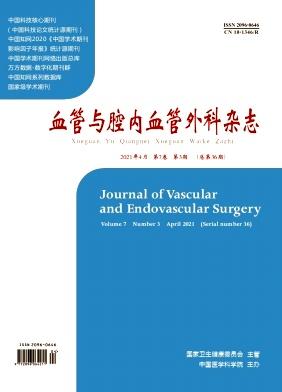Aortic intimal tears: detection with spiral computed tomography.
引用次数: 51
Abstract
PURPOSE To determine the frequency, locations, and sizes of aortic intimal tears detected using spiral computed tomography (CT). METHODS CT scans (26 single detector and 26 multidetector studies) from 52 patients with an unoperated aortic dissection and a patent false lumen were evaluated on a workstation. The number, location, and size of aortic tears were recorded and compared between the following groups: acute and chronic dissection, type A and type B, and single detector and multidetector studies. RESULTS In 52 patients, 129 tears were identified (mean 2.48 per patient, median 2, range 1-7). There were no significant differences in the number or size of tears between the acute and chronic, the type A and type B, or the single detector and multidetector groups (p>0.05). The most common locations for tears were the descending aorta (57, 44%) and the juxtarenal region (26, 20%). Within the type B category, there was no significant difference in tear locations between the acute and chronic groups (p>0.05). The majority of tears (88, 68%) were < or =1 cm in each dimension. Tears in the thoracic aorta were significantly larger than abdominal aortic tears (p<0.05). CONCLUSIONS All patients with an aortic dissection and a patent false lumen demonstrated one or more aortic intimal tears using spiral CT. Although most tears were small (主动脉内膜撕裂:螺旋ct检测。
目的探讨螺旋计算机断层扫描(CT)检测主动脉内膜撕裂的频率、位置和大小。方法对52例未手术的主动脉夹层和假腔未闭患者进行sct扫描(26例单检测器和26例多检测器研究)。记录主动脉撕裂的数量、位置和大小,并在以下组进行比较:急性和慢性夹层、A型和B型、单检测器和多检测器研究。结果52例患者共检出129例泪液(平均2.48例/例,中位数2例,范围1 ~ 7)。急性组与慢性组、A型组与B型组、单检测器组与多检测器组的撕裂数、撕裂大小差异无统计学意义(p>0.05)。最常见的撕裂部位是降主动脉(57,44%)和肾旁区(26,20%)。在B型组中,急性组与慢性组撕裂位置差异无统计学意义(p>0.05)。大多数撕裂(88,68%)在每个维度上<或= 1cm。胸主动脉撕裂量明显大于腹主动脉撕裂量(p<0.05)。结论所有主动脉夹层和假腔未闭的患者在螺旋CT上均表现出一处或多处主动脉内膜撕裂。虽然大多数泪痕很小(
本文章由计算机程序翻译,如有差异,请以英文原文为准。
求助全文
约1分钟内获得全文
求助全文
联系我们:info@booksci.cn
Book学术提供免费学术资源搜索服务,方便国内外学者检索中英文文献。致力于提供最便捷和优质的服务体验。
Copyright © 2023 布克学术 All rights reserved.
京ICP备2023020795号-1
 京公网安备 11010802042870号
京公网安备 11010802042870号
京ICP备2023020795号-1

Book学术文献互助群
群 号:604180095


 求助内容:
求助内容: 应助结果提醒方式:
应助结果提醒方式:
